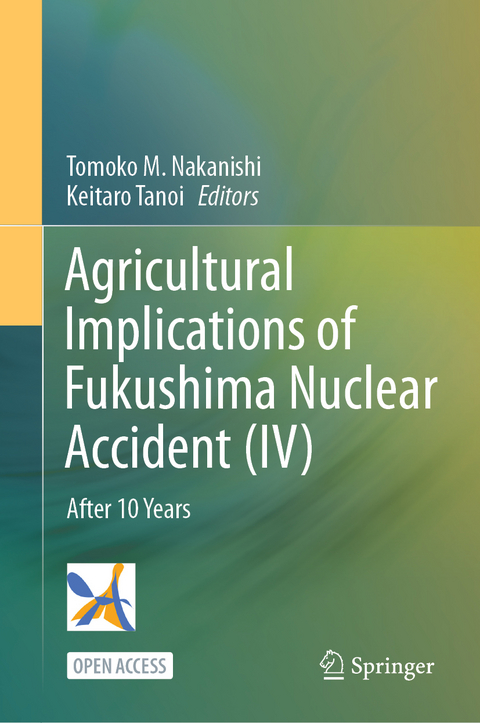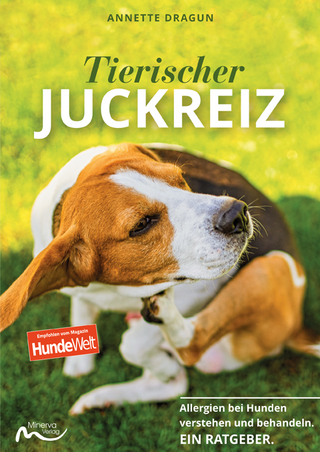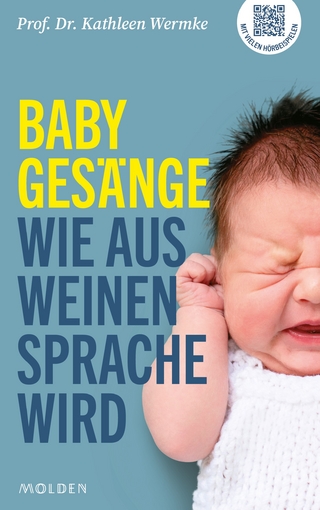
Agricultural Implications of Fukushima Nuclear Accident (IV)
Springer Verlag, Singapore
978-981-19-9360-2 (ISBN)
Tomoko M. Nakanishi In 1978, She got Ph.D. in radiochemistry from The Univ. of Tokyo. She is now an Emeritus Prof. of The Univ. of Tokyo and former President of Hoshi Univ. She has been enthusiastic about the development and application of imaging techniques using radiation and radionuclides in plants. Her research strategy excels by optimizing various complementary radiochemical/nuclear analytical techniques and innovative experimental set-ups to get insight into a part of plant physiology. Her work was published by Springer as an open access book, entitled “Novel Plant Imaging and Analysis -Water, Elements and Gas Utilizing Radiation and Radioisotopes. (Nakanishi, T.M., 2021) She received Hevesy Medal Award, an Honorary Doctor of Chalmers University of Technology in Sweden, an Ordre National du Mérite from the French government, etc. She is a board member of the Fukushima Institute for Research, Education, and Innovation to manage the reconstruction and development ofthe suffered area in Fukushima. Keitaro Tanoi Prof. K. Tanoi got Ph.D. in Agriculture, The University of Tokyo in 2011. He became a Prof. at the Graduate School of Agricultural and Life Sciences at The University of Tokyo in 2018. His interest is in applying radiation and radioisotope to agriculture studies or bioscience. He is now involved in studies of mineral transport in plants using radioisotopes as tracers. Periodically, he is producing unique radioisotopes with short half-lives, such as Mg-28, utilizing an accelerator for the tracer work. He is a manager for all the researchers and facilities utilizing radioisotopes in the faculty. He is an expert in radioisotope measurement and analysis. Since 2011, right after the nuclear accident in Fukushima, he has studied radioactive cesium dynamics in agricultural fields, along with experiments in the lab.
1. An Overview of our research.- 2. Recovery of Food Production from Radioactive Contamination Caused by the Fukushima Nuclear Accident.- 3. Annual Reduction of Transfer Factors of Radiocesium from Soil to Rice Cultivated in a KCl Fertilized and Straw Plowed-in Paddy Field from 2015 to 2021.- 4. Effects of radiocesium from suspended matter and fallout on agricultural products.- 5. Verification of Uptake and Transport Properties of Cesium in Hydroponically Cultivated Quercus Serrata.- 6. Candidates for breeding target genes related to cesium transport in plants after the Fukushima Daiichi Nuclear Power Plant accident.- 7. Evaluation of the Absorption of Different Forms of Cesium from Soil.- 8. Structure, Composition, and Physicochemical Properties of Radiocesium-Bearing Microparticles Emitted by the Fukushima Daiichi Nuclear Power Plant Accident.- 9. Verification of Effects on Crops and Surrounding Environment in Agriculture Using Radioactively Contaminated Grass Silage Compost Made by Aerobic Ultra-High Temperature Fermentation.- 10. Transport of 137Cs into Fruits after External Deposition onto Japanese Persimmon Trees.- 11. Progress Towards Managing Radiocesium Contamination in Orchards.- 12. Overview of Radiocesium Dynamics in Forests: First Decade and Future Perspectives.- 13. Toward the Estimation of Radiocesium Activity Concentration in Trunks of Coppiced Quercus Serrata: Leaf Availability Instead of Felling.- 14. Decomposition of Organic Matters in a Forest Floor Enhanced Downward Migration of Radioactive Cs after the Accident of the FDNPP.- 15. Effect of exchangeable and non-exchangeable potassium in soil on cesium uptake by Quercus serrata seedlings.- 16. Ten-year Transition of Radiocesium Contamination in Wild Mushrooms in the University of Tokyo Forests after the Fukushima Accident.- 17. Challenge to resume production of mushroom bed logs by potassium fertilizer application.- 18. Studies on the revitalization of radioactive-contaminated mushroom log forests: focus on shoots.- 19. Contribution of cesium-bearing microparticles to cesium in soil and river water of the Takase River watershed and their effect on the distribution coefficient.- 20. Global Fallout: Radioactive Materials from Atmospheric Nuclear Tests That Fell Half a Century Ago and Where to Find Them.- 21. Resilience Education Program in Iitate Village for the Young Generation
| Erscheinungsdatum | 02.09.2023 |
|---|---|
| Zusatzinfo | 1 Illustrations, black and white; XIII, 276 p. 1 illus. |
| Verlagsort | Singapore |
| Sprache | englisch |
| Maße | 155 x 235 mm |
| Themenwelt | Sachbuch/Ratgeber ► Natur / Technik ► Natur / Ökologie |
| Naturwissenschaften ► Biologie ► Ökologie / Naturschutz | |
| Naturwissenschaften ► Geowissenschaften | |
| Naturwissenschaften ► Physik / Astronomie ► Angewandte Physik | |
| Weitere Fachgebiete ► Land- / Forstwirtschaft / Fischerei | |
| Schlagworte | Agricultural effects of radio-contamination • Cs-137 accumulation and movement • Decontamination procedures • food contamination • Fukushima Daiichi Nuclear Plant • open access • Radioactivity distribution • Remediation trial of agriculture • The Great East Japan Earthquake |
| ISBN-10 | 981-19-9360-2 / 9811993602 |
| ISBN-13 | 978-981-19-9360-2 / 9789811993602 |
| Zustand | Neuware |
| Informationen gemäß Produktsicherheitsverordnung (GPSR) | |
| Haben Sie eine Frage zum Produkt? |
aus dem Bereich


